The European auto market continued its upward trend in September with new car registrations up 6.1% to nearly 1,270,000. For the nine months year-to-date, registrations were up 5.8% to 9,907,000.
The Spanish new car market saw impressive growth (+25.9%) compared to the same month last year; a result of the continued impact of government incentives. Europe’s two biggest markets Germany and Great Britain saw increases of 5.2% and 5.6% respectively.
Growth, however, was not restricted to Europe’s biggest markets, said JATO Dynamics, automotive intelligence provider.
Eight smaller markets have grown their sales by over 20% for the year-to-date period, notably Greece (+21.6%), Portugal (+31.7%) and Ireland (+30.0%), where the global recession had its greatest European impact.
Overall, 24 of the 29 countries studied increased their year-to-date sales compared to the same period last year.
Performance was mixed among the medium-sized markets.
Romania increased its sales by 10.8% for the month, contributing to a year-to-date increase of 27.0%.
The Czech Republic also performed well in September with a sales gain of 19.4% compared to the same month last year.
The downturn in The Netherlands continued with year-to-date sales falling 5.0%. Austria’s 1.7% dip in September also means that new car sales have decreased 4.3% for the year-to-date.
Volkswagen remained the top-selling brand in Europe and continued to increase its market share. Skoda’s growth, led by new models, kept it in the top 10 even though its best-selling Octavia slipped outside the top 10 models.
Ford retained second place in the top 10 brands as its Fiesta model reclaimed second spot from Volkswagen’s Polo in the top 10 models table. Peugeot registered double-digit growth year-on-year as its newly introduced 308, 2008, and 108 models all performed strongly.
This helped the French carmaker jump one place to fifth in the European top 10.
Outside of the top 10 Dacia continued to capitalise on the appetite for budget models as it grew its year-to-date sales by 29%.
Mazda’s new Mazda3 model helped the brand increase sales by 21.8% in September, while its crossover CX-5 also performed well. Strong sales of the Outlander, particularly the low-emission plug-in-hybrid version, helped Mitsubishi increase sales by 65.4% in September.
Six of the top 10 models registered sales growth both for September and for the year-to-date.
The Volkswagen Golf further strengthened its lead at the top of the market, growing sales by 19.3%.
Higher demand for the Volkswagen Polo, especially in Great Britain and Germany, also saw its sales climb 32.0% in September.
As a result, Volkswagen had the fastest growing models in September’s top 10. Sales of Audi’s A3 also continued to grow, resulting in a year-to-date increase of 23.5%, the highest among the top 10 models.
Outside of the top 10, year-to-date sales of the new Seat Leon grew by 60.8%, while the new Peugeot 308 also increased sales by 60.2% over the same period.
Small crossover models continued to take market share in Europe, with the Renault Captur (+4.5%), Opel/Vauxhall Mokka (+117.3%) and Peugeot 2008 (+83.8%) having all increased sales in September.
Tesla’s Model S electric luxury car is shaking up the market, outselling well-established competitors such as the Audi A8, BMW 7-series and Jaguar XJ. In this segment only the Mercedes-Benz S-Class (+151.2%) has sold more year-to-date.
Brian Walters, vice president of data at JATO Dynamics, said: “It is reassuring to see Europe’s recovery continue to strengthen for another month, particularly with the five largest markets all returning to growth in September. Not only are many established brands improving sales, but we are also seeing challengers like the Tesla Model S shaking up the market.”
Carlos Da Silva, manager for European light vehicle sales forecast at global information firm IHS Automotive, said that despite an ongoing message that the region is on a positive path, there are still many reasons to remain cautious.
He highlights some artificial support for the region such as a positive calendar effect, the UK plate change and the end-of-quarter push implemented by dealers and OEMs.
Da Silva also said that in terms of volumes, sales levels remain historically low.
He said: "Current SAAR is still below the worth point registered in late 2008 , which has been the case for the past two-and-a-half years or so."
Current slow sales levels are also being supported by high levels of both direct and indirect incentives, and that even sales of models which have a buzz around them such as Renault's Captur are being bolstered by special editions.
Da Silva said: "The main argument in favour of optimism is linked to the renewal cycle: whatever the economy, many markets do need to replace their fleet given the slump in new car demand during past years.
"This is clearly the reason behind the impressive growth numbers in markets like Portugal and Greece.
"A fleet of cars needs to be roadworthy or it becomes useless – and/or disproportionately costly – and the best way to keep it that way is to have new cars put into the market.
"That's a leading force behind the recovery of the European market this year but it also explains why the pace is slow: so far said fleet renewal is mostly supported by 'need' not by 'want'.
"By definition, this also explains why we do not see the market jumping back to pre-crisis levels: the European market structure has definitely changed."
IHS Automotive currently forecasts that passenger car registrations this year will grow by around 5.2% year-on-year, although this will be to a little over 12.5m units, some three million units below the peak years of the previous decade.
It expects demand to continue to grow for the coming years. By the end of the decade it will still only have reached around 14.3m units, still over one million units below where it once was.
European monthly sales volumes year-on-year comparison
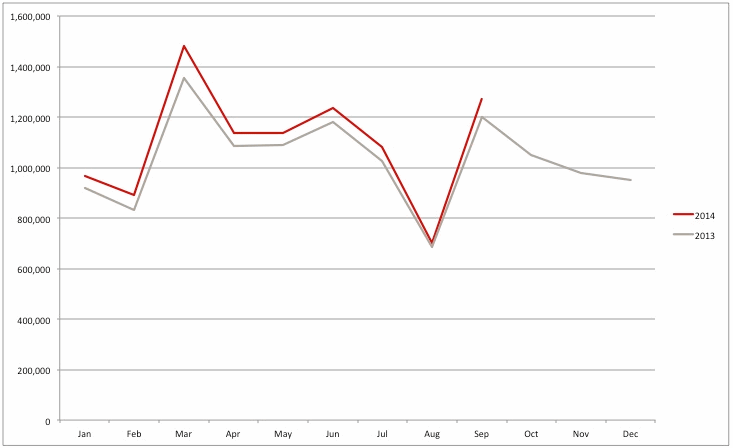
Top 10 brands
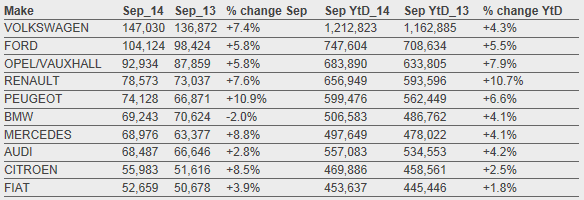
Top 10 models
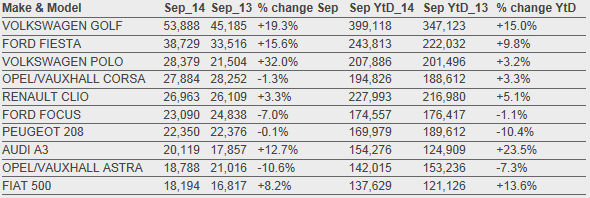











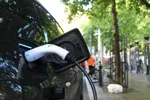



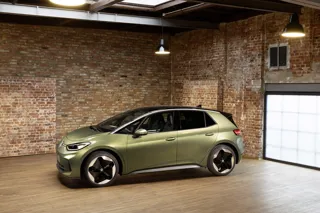
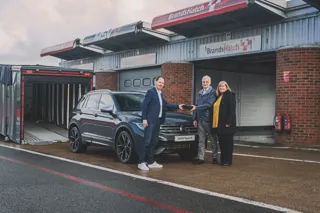
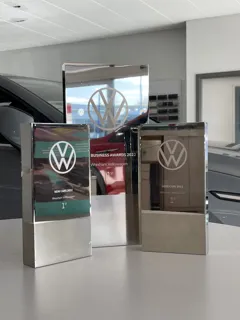

Login to comment
Comments
No comments have been made yet.